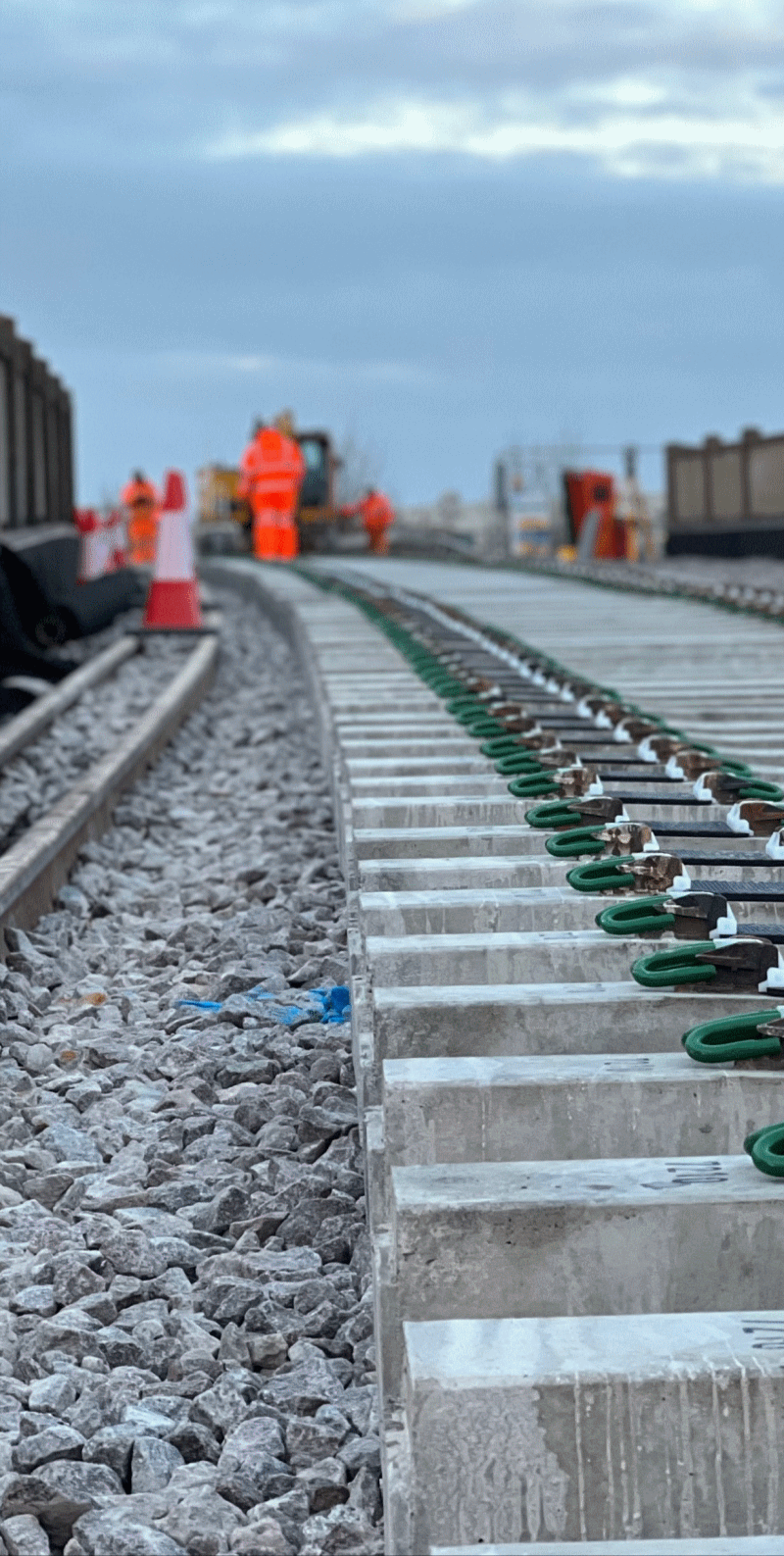The assessment to be presented in the ES will address the project’s impact on climate change. This will consider potential carbon savings arising through people changing their travel patterns and using low-carbon electrically powered rail in preference to cars. It will balance these against the additional emissions that would be due to the operation of East West Rail and from the construction of the project, including the use of building materials within it. The assessment will be undertaken in accordance with relevant guidance including PAS 2080: 2023 Carbon Management in Buildings and Infrastructure (PAS 2080: 2023).
The sources of potential carbon and greenhouse gas emissions during construction include:
- Embodied carbon emissions from the construction materials used, including raw material supply, transport and manufacture. Steel and concrete for bridges and viaducts are construction materials with the potential for high embodied carbon.
- Carbon emissions associated with construction processes, including transport of materials, workers and machinery to/from the works site and construction/installation processes.
- Carbon emissions associated with the transport of waste from the site and the treatment of waste.
- Carbon emissions associated with land use change, for example those mobilised from vegetation or soil loss during construction.
The sources of potential carbon emissions during operation include:
- Carbon emissions from the use of fuel and/or electricity to operate the trains, and any ancillary infrastructure including lighting, signalling and the energy required to operate stations.
- Carbon emissions from changes in traffic flow (road users).
- Replacement and maintenance activities including emissions from embodied carbon (i.e. materials), construction plant, transport of materials, and the treatment/disposal of waste.
- Carbon emissions associated with ongoing land use change/sequestration.
EWR Co aims to be a net zero carbon passenger railway. Various aspects of its design, construction and operation would seek to achieve relative carbon reduction. For example, exploring the potential for re-using and/or refurbishing existing assets and so reducing the extent of new structures, as well as considering the use of low carbon solutions (including technologies materials and products) to minimise resource consumption at each stage.
The evaluation of both the project’s carbon footprint (taking into account the operation of the East West Rail scheme and service as a whole) will consider the project’s performance as a contribution towards achieving a science-based 1.5⁰C aligned transition to net zero by 2050. As such, the significance of carbon emissions will be put into context through comparison with the respective UK carbon budgets.

